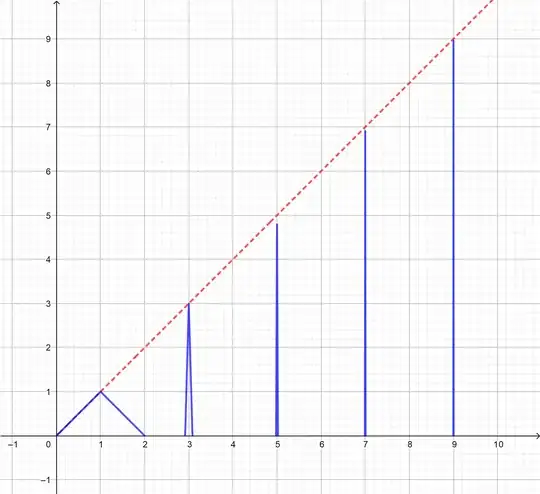Even if you restrict yourself to the case: "If a function has an horizontal or slant asymptote at $+\infty$ (or $-\infty$), there is a neighborhood of $+\infty$ (or $-\infty$) where the derivative is bounded", the statement is false.
Consider the function
$$f(x) = \frac{\sin x^3}x$$
(horizontal asymptote), or
$$f(x) = \frac{\sin x^3}x + x$$
(slant asymptote).
As an exercise you can show that, in the latter case,
$$|f'(x)| > 3|x|,$$
when $x = \sqrt[3]{k\pi}$, $k\in \Bbb Z - \{0\}$.
EDIT Thanks to the discussion with Allawonder and the amazing counterexample given by user21820, I learned, that, rather counterintuitively, even differentiable functions that monotonically tend to an horizontal (or slant) asymptote, may have unbounded derivative.
Here I add nothing to what user21820 very precisely wrote in his answer and following comments (of which I thank him). I just want to add another counterexample of that kind, simpler than his, at the cost of losing infinite differentiability.
Take
$$t(x) = \begin{cases} 1-|x| & (|x|\leq 1) \\ 0 & (|x| > 1)\end{cases}$$
and define
$$g(x) = \sum_{k=1}^{+\infty} (2k-1) t\left((2k-1)k^2(x-2k+1)\right).$$
The function is sketched below.

It is easy to verify that the area of the $k$th triangle is $\frac1{k^2}$.
So if we now define
$$f(x) = \int_0^{x} g(t)dt$$
we obtain a monotonically increasing function, with
$$\lim_{x\to+\infty}f(x) = \frac{\pi^2}{6}$$
with unbounded derivative.
